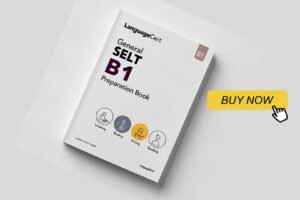e learning paragraph
E-learning Paragraph part 1: E learning, a term that encapsulates online education, is swiftly altering the landscape of traditional academic platforms. It’s not just a fleeting trend; it’s a comprehensive response to the evolving needs of the global student body. With the rise of digital devices and the internet’s omnipresence, e-learning provides an unparalleled flexibility that conventional classrooms often can’t. Students can now access a vast reservoir of information, courses, and resources from the comfort of their homes, and at their own pace. This self-paced nature of e-learning is particularly beneficial, catering to individual learning styles and allowing students to revisit materials as often as needed. Moreover, e-learning platforms incorporate interactive multimedia – from video lectures and animated illustrations to gamified quizzes – enhancing engagement and retention.
Part: 2
Geographical boundaries become blurred as anyone, irrespective of their location, can tap into courses from institutions or experts worldwide. This democratisation of education ensures that knowledge isn’t just limited to those who can physically attend a class or afford hefty tuition fees. However, while e-learning offers myriad advantages, it also calls for self-discipline and motivation from learners. As it becomes increasingly integrated into our educational framework, it’s imperative to balance digital learning with interpersonal skills and hands-on experiences. In summation, e-learning is not merely an alternative; it’s an expansive tool that, when used effectively, can revolutionise the essence of how we learn.
This e learning paragraph can be use for Class : 6, 7, JSC, SSC, HSC, world count may be 250, 150, 100, 300, 500. You should add or remove sentence as per your need.
How to Write a Paragraph on E-learning
When it comes to writing about e-learning, clarity and precision are key. Begin by introducing your main idea, then provide supporting details, and finally, conclude or transition smoothly to the next thought. Ensure your content is relevant to your audience and stays on topic.
Do’s and Don’ts in Paragraph Writing
Do’s:
- Start with a clear topic sentence.
- Use active voice for clarity.
- Maintain consistency in tense and point of view.
Don’ts:
- Don’t deviate from the main topic.
- Avoid using jargon without explanation.
- Don’t write overly long sentences that confuse readers.

3 Demo Paragraphs about E-learning for Different Classes
For SSC & HSC: E-learning has revolutionized the realm of education, especially for SSC and HSC students. With advanced resources available online, students can prepare for their board exams efficiently. Interactive mock tests, past papers, and detailed solution guides are at their fingertips, enabling better revision and understanding.
For Class 9 & 10: E-learning platforms, tailored for Class 9 and 10, offer students a flexible way to grasp complex topics. Whether it’s challenging math problems or intricate science concepts, e-learning modules break them down into bite-sized, manageable chunks. This digital approach caters to varied learning styles, ensuring comprehensive understanding.
For Class 6 & 8: For younger students in Class 6 and 8, e-learning introduces an element of fun. Interactive games, colorful animations, and engaging quizzes make learning an exciting journey. These tools, designed for their age group, ensure that foundational concepts are cemented in an enjoyable manner.
In today’s digital age, e-learning provides students of all classes, from SSC to Class 6, with the tools they need to succeed. Whether preparing for board exams or building foundational knowledge, online resources cater to every need.
Essential Skills for an SSC Pupil to Write an Effective Paragraph
Writing a compelling paragraph is a vital skill that every SSC pupil should master, as it forms the foundation for expressing thoughts coherently in exams and beyond. First and foremost, understanding the topic at hand is crucial. A well-defined topic sentence should introduce the main idea, serving as a beacon for the reader. Following this, pupils should ensure they provide supporting details or arguments that reinforce the central theme. Variety in sentence structure can make the paragraph more engaging and easier to read. Additionally, the use of transition words helps in maintaining a logical flow and connecting ideas seamlessly.
Common pitfalls : to write a paragraph
An SSC pupil should also be wary of common pitfalls, such as deviating from the topic or using redundant phrases. Proper grammar and punctuation are indispensable, ensuring clarity and preventing any misinterpretations. Concluding the paragraph effectively, by either summarizing the main points or offering a final thought, leaves a lasting impression on the reader. Furthermore, practicing regularly and seeking feedback can sharpen a student’s writing prowess. In essence, for an SSC pupil, mastering the art of paragraph writing involves a blend of understanding the topic, structuring thoughts logically, and refining grammar and vocabulary skills.



